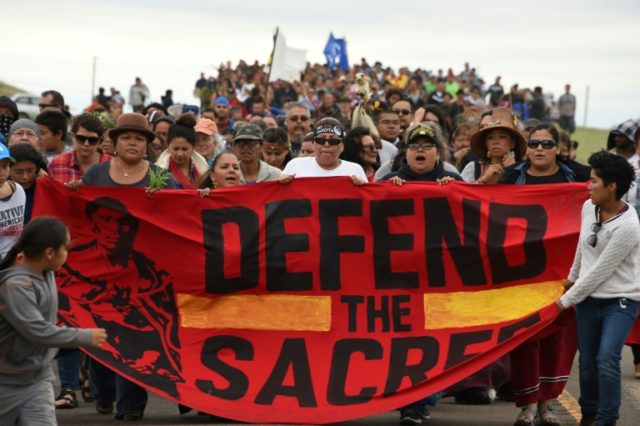Washington (AFP) – Hundreds of people protesting a North Dakota oil pipeline project clashed early Monday with police who fired tear gas, rubber bullets and a water cannon, soaking the crowd in subfreezing temperatures.
Protest organizers said 167 people were hurt, including three Native American tribal elders, and that seven people have been hospitalized for severe head injuries.
“The police… targeted the heads and legs of Water Protectors,” read a post from the head medic of the Oceti Sakowin Camp, referring to people protesting the contentious project, which is opposed by Native Americans who say it is being built on ancestral lands.
The Morton County Sheriff’s Department put the number of protesters at 400, saying they were engaged in a “riot” and had started a dozen fires.
The Bismarck Tribune quoted the sheriff’s department as saying protesters threw rocks and logs at officers, and one officer was struck in the head.
One person was arrested, the report added.
“We have seen at least four gunshot wounds, three of them I know to the face and head, rubber bullets,” medic Leland Brenholt said in a video posted on social media, adding that police were also using water, pepper spray and tear gas on protesters.
“Right now, we are trying to keep people warm, we’re trying to get them decontaminated, and treating all kinds of different wounds. People have been hit with (tear gas) canisters in the chest or the leg and that sort of thing.”
Twitter user Ruth Hopkins commented: “WHAT EVIL LOOKS LIKE. Police spraying innocent civilians with water cannons. Current temp. 25, you could die #NoDAPL.”
Last week the US government put a halt to the pipeline construction project, saying more analysis and debate are needed.
Pipeline operators Energy Transfer Partners and Sunoco Logistics Partners struck back, asking a court to stop regulators from further delaying the project, to be built under the Missouri River and man-made Lake Oahe in North Dakota.
The waterways are the Standing Rock Sioux Tribe’s drinking water source, and it has objected to building the 1,172-mile (1,886-kilometer) pipeline underneath the river and lake, for fear that it might leak.
The tribe, which now believes it has the momentum in its battle against the companies, wants the pipeline’s route altered away from lands near its reservation. It also claims those lands contain sacred historic artifacts.
The conflict between the tribe and the oil pipeline company has galvanized North American native tribes and supporters, who have camped in the thousands near the construction site for months in an effort to block it.
There have been sympathetic protests nationwide, with celebrities, politicians and environmental activists joining the cause.

COMMENTS
Please let us know if you're having issues with commenting.